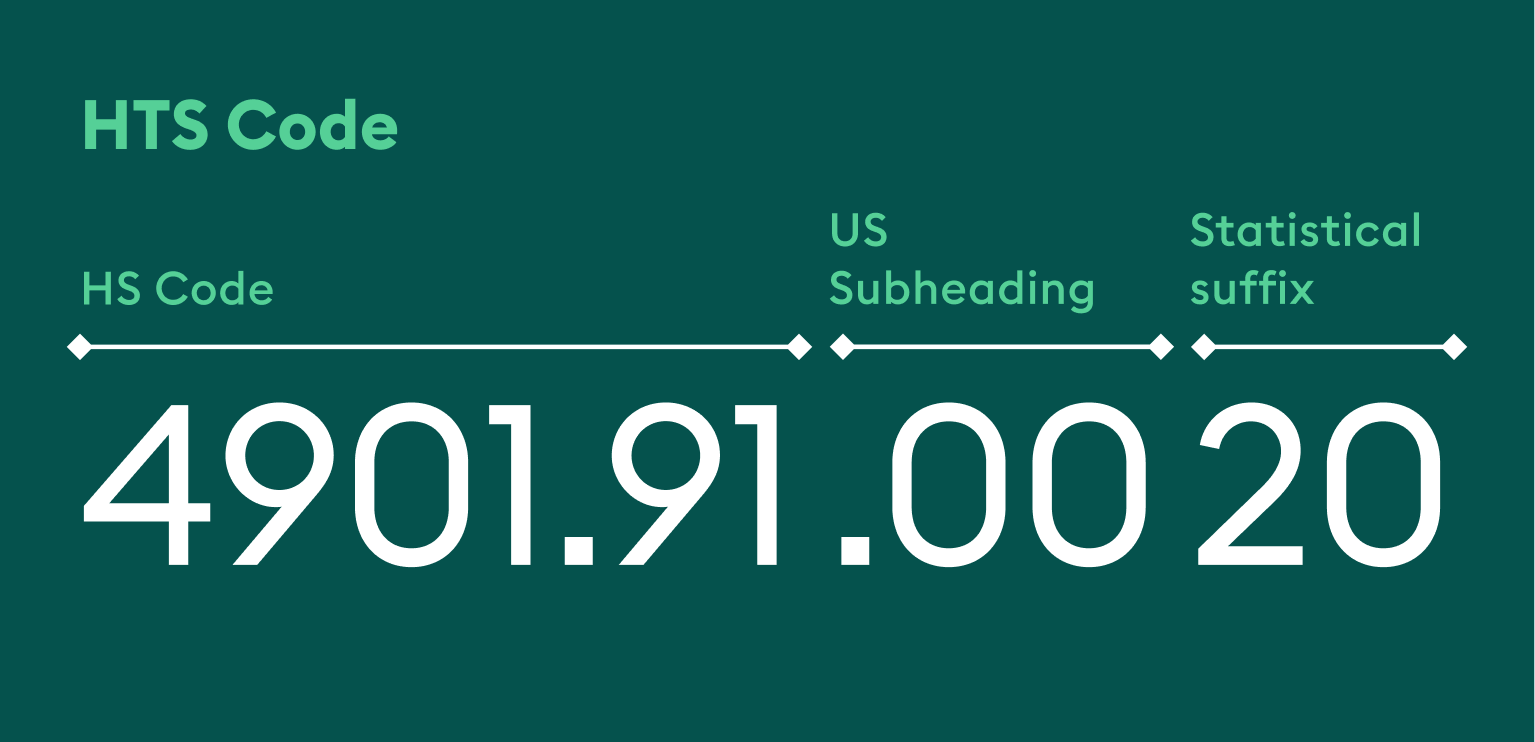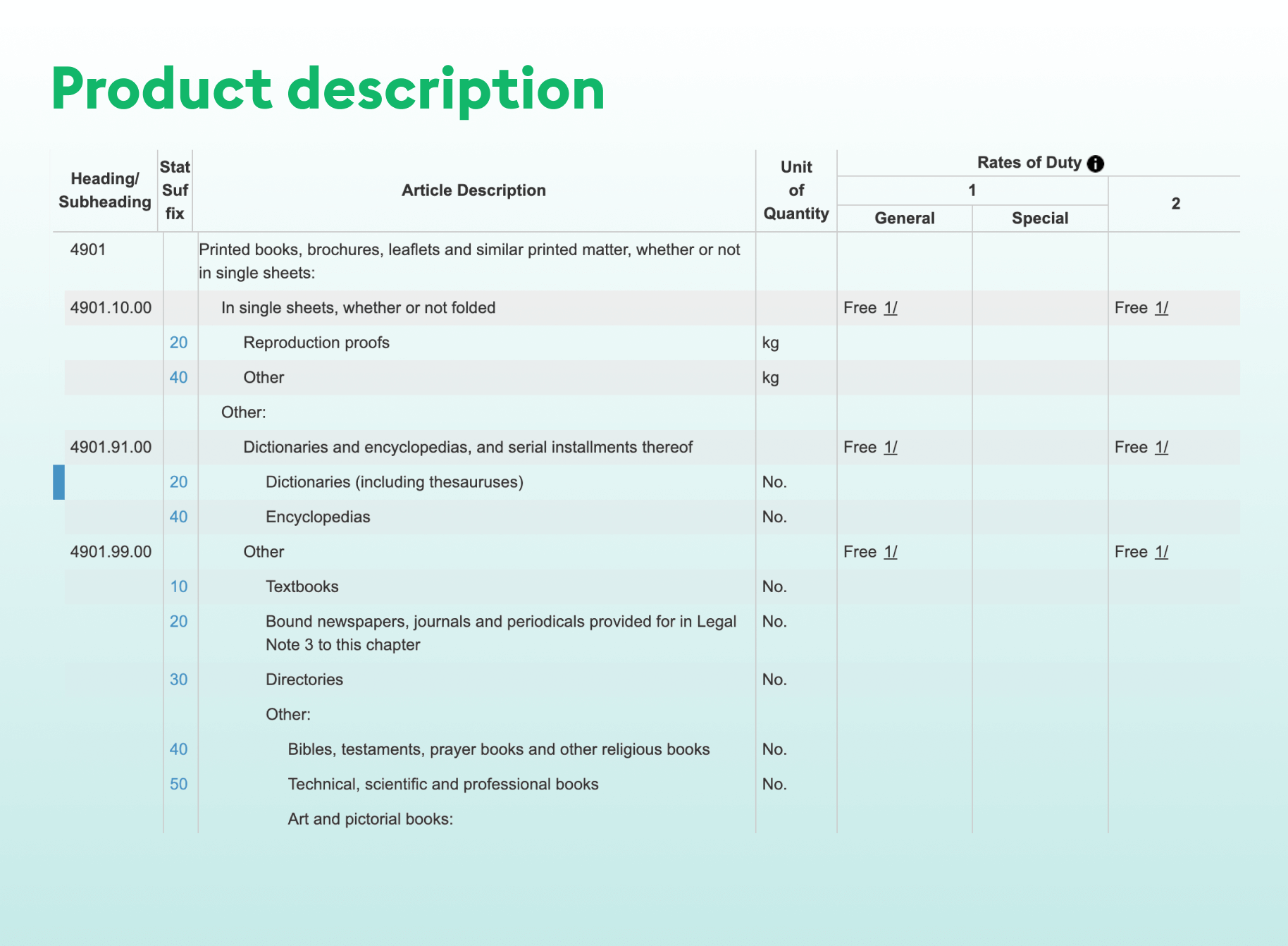Harmonized Traffic Schedule (HTS) codes are used to classify goods and calculate customs duties in the US. Read this blog to find out more and how you can check your product’s HTS code.
Knowing what HTS codes are is crucial if you’re trying to import cargo in the US. They not only help identify the cargo you’re importing but will also help you calculate the customs duty you need to pay. HTS codes help you plan your shipment ahead and reduce any custom-related delays at ports.
However, the shipping industry is quite dynamic. Even if you plan your shipment correctly, certain global events can make changes in your shipping schedule. That’s why it’s important to keep up with what’s happening in the industry.
To help you with this, we publish a monthly logistics report called ‘Where are all the containers?’. In this report, you get insights into the main events and developments in the global logistics and shipping industries. Using our unique and cutting-edge data, the report explains how the events affect the global economy and subsequently, your business.
Our monthly logistics reports offer a great way for you to keep up with the latest events, plan your logistics better, and make more profits. Just click the banner below to get your free copy of our latest ‘Where are all the containers’ report.
What is an HTS code?
Harmonized Tariff Schedule (HTS) codes are product classification codes between 8 to 10 digits used by importers in the US. The first six digits are Harmonized System (HS) codes, and countries of import provide the subsequent digits for additional classification.
Just as we use SCAC codes to identify carriers and container numbers to identify containers, HTS codes identify the cargo being transported. HTS codes were first developed by the World Customs Organization as an attempt to standardize global trade.
To give you an example, let’s say you’re shipping goods from Shanghai to Los Angeles. For this, you’ll need to determine the HTS code of your cargo. The first six digits of this code will be the universal HS code, and the final four digits of the HTS code will be used specifically for US imports.
We’ll discuss more on how you can determine the code, but first, let’s understand an HTS code’s structure.
HTS code structure
Let’s take a look at an example of an HTS code for a better understanding of its structure.

In this code, the first six digits are the HS code. We’ll discuss more about HS codes later in the blog. Let’s first understand the HTS code.
The last four digits of this code, which are ‘0020’, make it an HTS code. Here, ‘00’ is the subheading and is used to establish duty rates. The last two digits, ‘02’, are the statistical suffix that collects trade data. It’s not used to identify the product. The statistical suffix must be correct when required, but if it’s not required it’ll be ‘00’ by default.
|
Did you know: Since we’re talking about US imports, it’s interesting to note that blanked sailings on the Asia-US West Coast corridor have increased by reportedly 340% when compared to figures in 2019. Read our report to find out more about how this might impact your shipping logistics. |
Now that you know what an HTS code is, let’s look into more detail about how it’s different from an HS code.
HS Code
The Harmonized System classification is a six-digit code used for classifying globally traded products. HS codes, also called HS numbers, are used by customs authorities around the world to identify the duty and tax rates for specific types of products. HS codes are recognized by 98% of world trade.
Let’s take the above example for understanding HS codes in detail. The first six digits, ‘4901.91’ form the HS code. According to official classification, this code standard is for “Dictionaries and encyclopedias, and serial installments thereof”.

Even within the HS code, there’s a classification of numbers.
- Chapter: The first two digits, which in our example are ‘49’, is the chapter.
- Heading: The next two digits, which are ‘01’, is the heading within the chapter.
- Subheading: And finally, the next two digits, ‘91’, identify the subheading within the chapter.
Apart from HS and HTS codes, there’s yet another code used in the US for exporting goods. Read on to find out more.
Schedule B codes
For American exporters, the Schedule B code is a 10-digit subset of HTS codes. It must be mentioned on all documents or filings used exclusively for export. The US government tracks US exports using Schedule B codes for statistical purposes.
Schedule B codes are maintained by the U.S. Census Bureau instead of the International Trade Commission.
The first six digits of a Schedule B code, like HTS codes, should match those of an HS number. However, the last four digits of a Schedule B code may differ even from the HTS code, making it easier to accurately identify and classify products.
Difference between HS, Schedule B and HTS codes
After reading about these three codes, it’s easier to become confused as to which code you should choose while shipping your goods.
Take a look at the table below to understand the difference between them.
|
Difference between HS, Schedule B and HTS codes |
||||
| Number of digits | Import or export | Governing authority | When they’re used | |
| HS Codes | 6 | Global use | World Customs Organization | Used to reference classification with anyone outside the US |
| HTS Codes | 10 | US import | U.S. International Trade Commission | Specific to the US and must be used by US importers. HTS codes are not recognized globally |
| Schedule B Codes | 10 | US export | U.S. Census Bureau | They’re a subset of HTS codes. Companies that export from the US usually use these codes because certain HTS codes can’t be used for exports |
Functions of HTS codes
HTS codes have several functions in international trade. For starters, these codes help government officials identify the goods that are being imported or exported across US borders. HTS codes also enable officials to apply appropriate taxes for various product categories.
Besides being a vital tool for customs clearance, HTS codes classify and categorize products in a worldwide system. The US government and the international trading sector report and analyze the trade data using HTS codes. These codes give them insights into the inflow, import quotas, outflow, tax revenue, and domestic production of specific goods. This supports the US government and the international trading sector to make better policies to improve their international trade.
Being part of the shipping industry, it’s your responsibility to make sure your cargo has the right product classification code. Otherwise, your cargo may get stuck in the port and you may end up paying late fees like demurrage or detention or other port charges. Read on to find out how you can identify your product’s HTS code.
How do you identify your product’s HTS code?
Identifying your cargo’s HTS code is crucial. You can easily look up your product’s HTS code by using ITC’s free search tool here:
If you want to find out the Schedule B code for your cargo, then use the Census Bureau Search tool:
How to use HTS code to identify import duty
As we mentioned before, HTS codes also help you identify how much import duty you’ll have to pay. This can help you plan your logistics better and calculate the cost of shipping.
If you are importing from a country that has entered into an international trade agreement with the US, then the US customs duty rates on a particular commodity are likely to be reduced. However, this discount does not apply to all products. You can obtain detailed information about this by checking the official HTS list published by the United States International Trade Commission.
How to calculate import duty
For now, let’s take the example of the HTS code we discussed above and calculate how much import duty you’d have to pay for it.
Let’s assume you’re importing Dictionaries (according to the HTS code) from China.
Here’s some information you must have:
- Name of importing country: United States of America
- Name of exporting country: China
- HTS code of the product: 4901.91.0020
- Name of the product: Dictionaries and encyclopedias
- Value of commercial cargo: Estimated at $5,000
You can calculate the payable customs duties for the mentioned product in the following manner:-
- Enter the product’s HTS Code into the USITC’s HTS search website to know the duty rate for that product.
- Check if there are any trade agreements between the US and China for this particular product.
Multiply the duty rate (percentage) by the commercial value of the cargo. If the duty rate is 20% and the commercial value is US $5,000, then the duties payable will be:- 20% x 5, 000 = $1,000
If you want to find out the import duty for other countries, you’ll also have to consider the freight cost and freight insurance.
Now that you know how you can estimate the custom duty while shipping, the next step is finding out how you can keep up with the latest events in the shipping industry to plan your logistics better. Read on to find out how we can help you with this.
Want regular container logistics updates? Read our monthly report
Being part of the shipping industry, it’s important that you keep up with what’s happening in the shipping industry. To assist you with that, we regularly publish container logistics research reports each month called ‘Where are all the containers?’
In this report, you get insights on the latest global events happening in the shipping industry and how they affect your business. You also get information on container prices, availability and market trends. Plus, we publish predictions about the coming months so you can plan your logistics better and make more profits!
To give you an example, our latest “Where are all the containers” report mentioned that the Transpacific rates to the US West Coast are near the 2019 levels now, and those to the East Coast are 12% higher than in 2019-end. A major factor for the rates to fall is that demand is now easing. This means that now there will be less post congestion in these ports. So you can plan your shipment to the US accordingly.
Now imagine getting this valuable information month-on-month without having to research on your own. Plus, our report is absolutely free! Simply click the banner below to get your free copy of our monthly report.
HTS Codes: Common FAQs
What are HTS codes?
HTS or Harmonized Traffic Schedule codes are product classification codes used by U.S. Customs to classify goods for customs purposes.
What are the functions of HTS?
HTS codes help government officials identify the goods that are being imported or exported across a country’s borders. They’re also used to collect data on international trade to make better policies.
What is the difference between HS and HTS codes?
HS code is a 6-digit code used on a global level to identify products. HTS codes, on the other hand, are used 10-digit codes used in the US to identify the product being imported.






